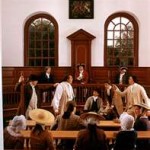A friend sent me a recent blog post from the “Legal Skills Prof Blog” (who knew?) that she thought might be of interest to me in light of my current endeavor at blogging. The post briefly discusses the “negativity bias,” one of the many cognitive biases that can result from our unconscious use of heuristics. It reminded me of how significant these mental shortcuts are to us.
At its simplest, the negativity bias causes us to feel the sting of a negative experience or loss to a much greater degree than a positive. (Think of the bad customer service experience that never seems to diminish, while a good one, while nice at the time, quickly fades into oblivion.)
The author then goes on to ask whether or not this might provide a lesson in terms of pitching the best legal arguments. I have certainly seen the “parade of horribles” work to encourage parties in mediation to find a solution rather than continue the pain of the dispute at hand. I think the greater lesson is that as lawyers, we should be aware of the use of heuristics and the cognitive biases that may result from the unknowing misapplication of heuristics by an individual in evaluating information and then using this information to make a decision.
 Yesterday I wrote that the Marquette moot court team was a quarter-finalist at the Spong Invitational Tournament at William & Mary School of Law. Since then, the team learned that one of its team members, Dieter Juedes, won the distinction of second best oralist for the entire competition. Congratulations to Dieter on this accomplishment.
Yesterday I wrote that the Marquette moot court team was a quarter-finalist at the Spong Invitational Tournament at William & Mary School of Law. Since then, the team learned that one of its team members, Dieter Juedes, won the distinction of second best oralist for the entire competition. Congratulations to Dieter on this accomplishment.
